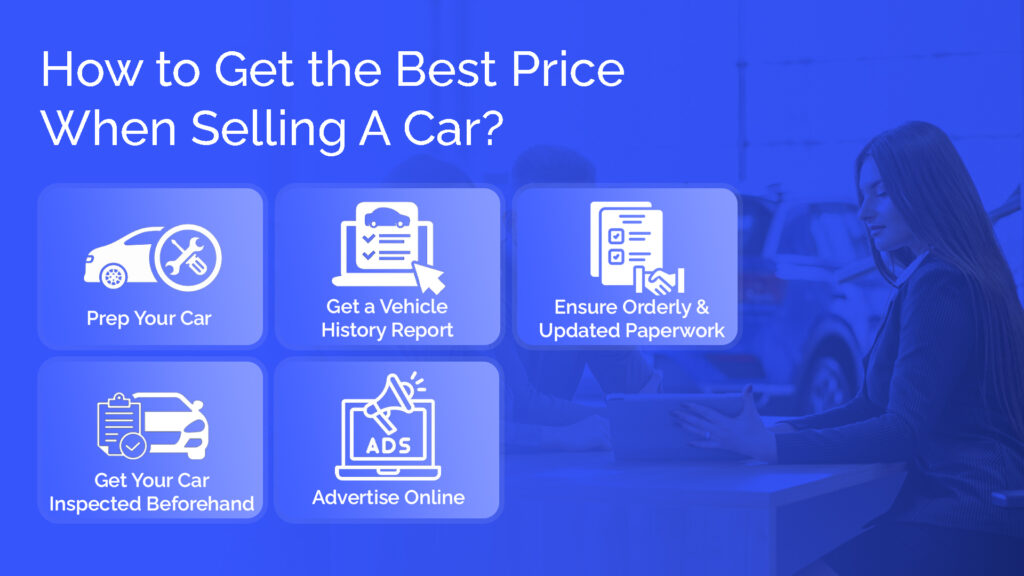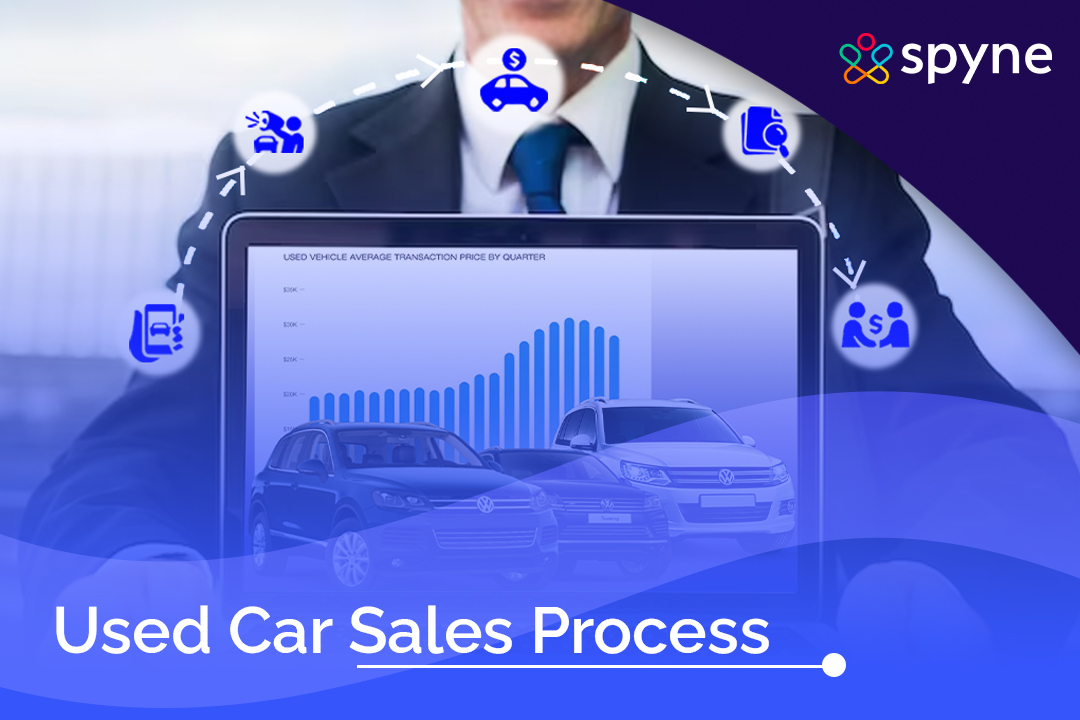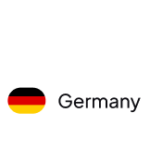Ensuring an efficient and hurdle-free used car sales process is no big feat. It’s quite easy if you leverage the right technology. Research shows that the used car sales process begins with 95% of shoppers researching online sources for information. Here is where marketing your vehicles well, presenting them with detailed descriptions, and providing accurate and honest information come into play.
This blog will cover the steps to successful sales management, determining the right price for your re-sell, and how choosing the right tools boosts your efforts.
10 Steps to a Successful Used Car Sales Process
An efficient and hurdle-free used car sales process involves multiple steps that should be followed to ensure its effectiveness. These include proper preparation, making a good impression on the customer, and attractively displaying the vehicles.
Here are some crucial steps to a car sale:
1. Prepare and Research
The first step of how to sell a car at a dealership is to be well-researched about your vehicle inventory. Know the features of the cars on offer and keep in mind any issues they may have. Research current used car market values, too, so you know what vehicles to sell in your inventory. Make sure to send the vehicle for a touch-up and ensure the car is clean.
2. Make a Good Impression
Be presentable and welcoming to your customers. It is a huge plus point if you are open to listening to your customers and are proactive in your interactions. Ask questions, and be inquisitive and honest about the vehicle’s condition, benefits, and limitations, if any. Auto sales training and educating your dealership staff on customer communication are essential.
3. Present Your Vehicle Well
Don’t be afraid to show off your vehicle. One of the key aspects of landing a successful sale is highlighting the vehicle’s features and unique additions. Invite the customer to ask questions about its features and capabilities. Present the car with attractive descriptions.
4. Understand the Customer’s Needs
Understanding what the customer is in the market for goes a long way in the used car sales process. Discuss their budget, ask about their financial situation, and be aware of why they are shopping for that particular vehicle.
5. Hold a Test Drive
Invite the customer for a test drive so that they can have an immersive experience. This allows them to assess how well the vehicle suits their needs. Being in the driver’s seat and experiencing it firsthand would cancel out some customers’ doubts and raise additional questions.
6. Gather Post-test drive Feedback
An inquiry should not end after the test drive. Interact with the customer after their test drive and ask how their driving experience was, what they felt was lacking, and what they enjoyed the most. Closely observe their reactions and listen to their answers.
7. Negotiate Well
Fair negotiation is one of the most vital steps in the car sales process. Both parties should be open to listening to one another and finding the best price. Read the room well, recognize green lights in a customer’s behavior, and guide them toward closing the sale.
8. Provide Satisfactory Customer Service
Be thankful to the customer for choosing your dealership and encourage them to contact you for any other inquiries. Make the financing and insurance process as efficient as possible.
9. Follow-up Well
Be them after they’ve made their purchase, too. One of the important car sales techniques is to check in with a customer on how the vehicle is running and if they’re satisfied with it. So schedule them for regular check-ups and service appointments when needed.
10. Strengthen Post-Sales Relationships
To get your dealership referred and ensure repeat business, create a positive atmosphere worth returning to. Send out personalized promotional messages and email reminders catered to their purchase.
Getting the Ideal Deal: The Price to Sell Your Car At
The road to a car sale is setting the right price for your car. There are quite a few factors to consider when determining the price of your vehicle. Some of these include its age, condition, mileage, and local market status.
1. Research the Value of Your Car
Your car’s resale value can be impacted by its overall condition. The used car sales process involves using valuation tools to help determine the ideal price. Tools like Spyne’s used car value calculator give an accurate and detailed result. Also, consider different factors like a dealership’s offer on your car and what you might get selling it privately. Be open to all possibilities and research well.
2. Check Local Listings
While doing online car sales research, check your local listings. The price of the same car can differ when sold in different states. Comparing prices and seeing what factors others base their offer on can help you set a competitive price.
3. Compare it to the Current Market
The demand and supply of vehicles can affect their prices. The price you get for your car depends on used car market trends. Seasonal demand may prefer specific makes and models, so others might not sell well. Check the car sales prices flowchart for more clarity.
4. Be Open to Negotiation
Set a base price from your side, but keep an open mind. After considering filtering out certain details that negatively or positively impact your offer and any imperfections in your resell, be realistic about the price you set.
5. Send it for an Assessment
Send your car for inspection to examine it for any potential problems. Sort out any dents, scratches, and faulty machinery issues to get the best price on your vehicle.
How to Get the Best Price When Selling A Car?
Researching automotive digital marketing trends and preparing your car for sale is a one-way ticket to success. So, keep your car clean and well-maintained, and even consider selling it privately for a better deal.
Here are some more steps to follow:
1. Prep Your Car
Improve your vehicle’s appearance. Address any minor repairs and thoroughly clean your car to boost its resale value. A well-maintained vehicle also builds trust and confidence among potential buyers. Additionally, it shows that the car hasn’t been neglected, making it more attractive.
2. Get Your Car Inspected Beforehand
The used car sales process is incomplete without getting your car looked at. Having an inspection report to show prospective customers solidifies trust and can ease the deal. Therefore, you can address any issues and solve them before they reach the buyer’s notice.

3. Get a Vehicle History Report
A vehicle history report gives customers insight into a vehicle’s past. So, whether you are a used car dealership or selling privately, share this report to show your car’s condition. Therefore, it assures that the car has been maintained and cared for.
4. Advertise Online
List your car on various used car marketplace. If you’re confused about how to sell your car privately, create listings on auto marketplaces with a strong buyer demographic. Write attractive descriptions, promote high-quality images, and publish as many listings as possible.
5. Ensure Orderly and Updated Paperwork
Bring along your car’s title and all necessary paperwork to finalize the deal on the spot. Preparing and securing all the important documents for a smooth used car sales process is best.
Preparing Yourself to Sell Your Car: The To-Dos
To sell a car warrants a lot of preparation and research from your side. Not only do you need to assess market conditions and prepare your vehicle, but you also need to see the entire sales process through.
Identify any issues with your vehicle, send it for repair, and ensure all minor tweaks are made before presenting it to your customer. So, making a good first impression by ensuring your vehicle is presentable will nudge further interaction in the right direction.
Prepare all the necessary paperwork in advance, too. Documents like an owner’s manual, maintenance records, vehicle history reports, and emission testing records make the used car sales process easier. These are valuable resources for a buyer and enhance your dealership’s reputation by providing honest and consistent information.
Selling and Transferring Your Car: A Comprehensive Guide
Selling and transferring your car requires preparing it, determining its value, gathering all the essential documents, and then completing the title transfer. Following these steps acts like a used car buying guide to avoid mistakes and facilitate a smooth process.
Here are some steps to follow in the used car sales process:
1. Sign the Title Transfer
Sign the title transfer of your used vehicle. Be careful of any errors, as cross-outs can result in invalid information. Do not skimp on details; beware of redundant information that may hamper the legal process.
2. Provide a Bill of Sale
The bill of sale is a source of proof, encompassing details such as the buyer’s name and address, the date of sale, and the selling price. So, it is essentially a summary of the sales process, but as a tangible document.
3. Remove the License Plate
When you return your license plates to the DMW, the vehicle will no longer be registered in your name. So, your ownership and responsibility over the car end once you surrender possession of the license plate.
4. Cancel the Insurance
Once the deal is completed, get in touch with your insurance company to cancel the insurance policy for the vehicle sold. However, you must provide proof of the sale to avoid misunderstandings and back up your reasoning.
How Spyne Helps in the Used Car Sales Process by Attracting Leads and Boosting Sales
Spyne’s retail AI suite gives dealerships a massive advantage when it comes to a seamless used car sales process. The complex question of how to sell a car at a dealership is given a multi-featured answer with solutions for sourcing your cars, publishing them online, and following up with their leads.
Here are the features that showcase our expertise:
1. Source Your Cars with Inventory Tracking
Spyne’s automotive inventory management gives you real-time insights into where to source your cars. By tracking current market trends, we help you determine the trending vehicles and must-haves in your inventory. With the top makes and models, your inventory can reach a grade-A rating by stocking the market’s latest and high-demand models. Attract more leads by meeting consumer preferences.
2. Publish Them on Social Media, Marketplaces, and Your Website
Refurbish your car dealer website with Spyne’s unlimited customization options. Not only do we advise you where to get your cars from, but we also present you with the place to showcase them. Choose from a range of fully customizable templates that are designed to bring your brand to life. Publish your vehicle listings on social media and marketplaces like Facebook Marketplace to reach more customers. So, every aspect of your vehicle can be displayed with detailed page-building options, allowing you to create sections to your heart’s content. Using our design capabilities, your vehicle listings can be edited on the go, providing a hassle-free experience.
3. Seamless CRM Integration
Spyne’s innovative Connect.ai solution gives your dealership unlimited access to detailed customer profiles, vehicle preferences, lead status, and servicing schedules. With collected information under a single dashboard, the used car sales process works streamlined and connects you with customers better. Therefore, knowing customer demand allows you to work toward fine-tuning your marketing strategies and sending automated alerts regarding their preferences.
Conclusion
Spyne’s automotive CRM suite redefines the used car sales process by providing your dealership with the tools to attract leads, monitor inventory, and focus on high-demand opportunities. Supporting you through your entire journey, we work to upgrade the process day by day. So, your efforts are given depth, and your reputation is solidified by combining the correct operations in your advertising strategies. So, sell well, market smart, and be the top name for used cars in the automotive industry.




























